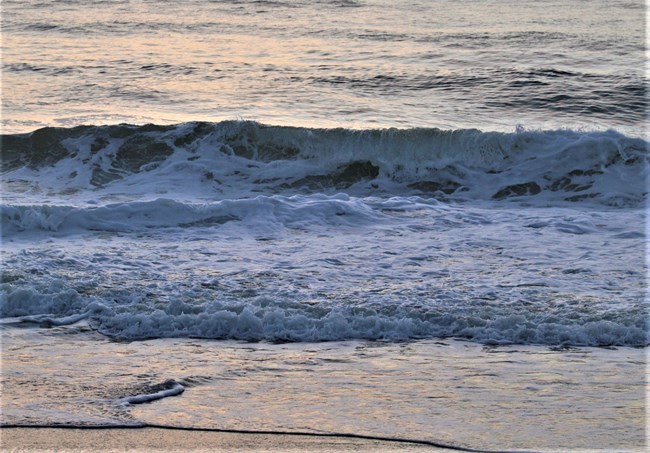
NPS What do you hear? Odds are, if you ask yourself this question at any random time throughout the day, your answer will probably be human-caused sounds. Whether you are at home, in a vehicle, or somewhere in town, the noises around you will most likely be coming from other people and mechanical equipment (televisions, computers, automobiles, etc.). It is rare, except for maybe at night if you live in the country or a quiet neighborhood, to not be within earshot of human-produced or human-created sound. (Even quiet homes are bathed in artificial “white noise” from central air and heating units, refrigerators, and other such devices.) Natural, non-human-related sounds are often drowned out of the acoustic environment, and thus we sometimes forget what the natural, non-mechanical world even sounds like. National parks are charged with preserving natural and historical resources, including the sounds that are associated with those resources. At Fort Matanzas, that means visitors sometimes hear the very loud boom of replica Spanish colonial cannon, or the sharp crack of musket fire as demonstrated by historic reenactors. But more often than not, visitors to the park are treated to an orchestra of natural sounds, as Fort Matanzas is mostly comprised of the undeveloped portions of two barrier islands. These sounds can be physical in nature, such as the surf endlessly breaking along the shore, or the wind rustling the fronds of sabal palms, bringing to mind the cooling trade winds of tropical isles. Or perhaps the sound is of raindrops pelting those very same fronds during a mid-summer afternoon thunderstorm. Much of the natural soundscape is produced by the park’s resident wildlife: birds are most often heard, whether they are gulls calling by the seashore, or unseen feathered denizens of the forest hammock, flitting furtively from branch to branch. Or the caller may be instantly identifiable, such as an osprey perched on-high, or a great-horned owl calling for its mate at dusk. Insects produce the white noise of the natural world- cicadas and crickets in their multitudes set the air to humming. Some animal noises are unexpected. Think of the pleasant surprise as you hear the gentle exhalation of a dolphin that has just breached the surface of the water. Or consider the innate sense of alarm one feels upon hearing the warning rattle of a coiled rattlesnake! The rarest “sound” that can increasingly only be found in parks may be silence. There are few places in our busy world where the lack of sound is a natural event unto itself. However, the parks containing areas blanketed in quiet tend to be large in size and located out west. At Fort Matanzas visitors seeking quiet and natural sounds are just as likely to hear vehicles, boat motors and jet skis, aircraft, and equipment from park operations. Such is the sad fact of a park only 300 acres in size located on the heavily developed Florida coast. But if more people value a natural soundscape, and have less tolerance for noise pollution, perhaps society will mandate quieter technologies that will allow the sounds of nature to be heard in our modern world. |
Last updated: August 14, 2021
